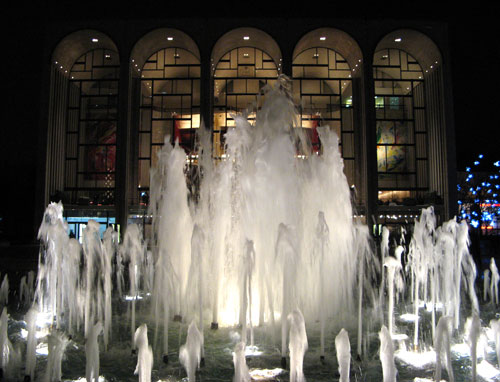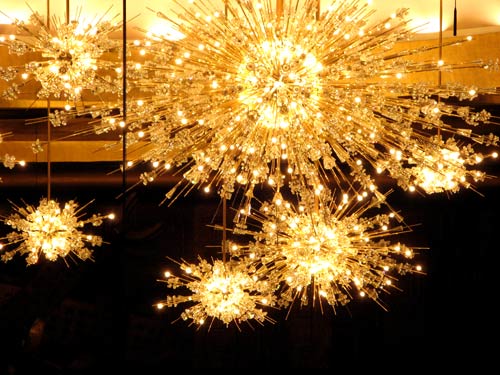Cav & Pag at the Met
A newly LASIK-ed SK joined us at the Pound & Pence after work to toast KG’s recent success. I slipped out after the first congratulatory round to make the early curtain at the Met. Tonight: the double-bill of Pietro Mascagni’s Cavalleria Rusticana (Rustic Chivalry) and Ruggero Leoncavallo’s Pagliacci (Clowns), a combo commonly referred to as “Cav and Pag.”
This tragic pair of Italian one-acts are more often than not grouped together in performance, due to their similarities in time-frame, style and themes (infidelity, betrayal, bloody retribution.) The premiere of Cavalleria in Milan in 1890 was a formidable debut for the 26 year old Mascagni — a staggering success he was unable to replicate for the rest of his career (though Mascagni did go on to compose 15 operas, an operetta, and several orchestral, piano and vocal works.) Fascinated and inspired by the success of his contemporary’s short, realistic opera, Leoncavallo set out to compose his own. Pagliacci triumphantly premiered two years later in 1892, launching Leoncavallo into instant celebrity. And as in Mascagni’s case, the opera was to serve as the high point of his career; today it is the only work by Leoncavallo in the standard operatic repertory.
Cavalleria Rusticana and Pagliacci are quintessentially of the Italian verismo or naturalist style: dramatic, poignant, lyrical and swirling with emotion. Together they made a powerful combination of tragic opera.
As on the night of The New York Times review, tenor Salvatore Licitra, who had been scheduled to sing Canio in Pagliacci, while Frank Porretta sang Turiddu in Cavalleria Rusticana, ended up covering the roles in both operas after Porretta was unable to appear due to illness — a feat The Times likened to pitching 18 innings in one night. The audience at this performance was similarly impressed, brought to their feet by the opera double-header’s end.


Cav and Pag have remained firmly ensconced in the public imagination for over a century, in no small part due to two of the most recognizable musical themes in opera. Tenor Enrico Caruso‘s 1902 recording of Leoncallo’s “Vesti la giubba” was the world’s first gramophone record to sell a million copies (though it wasn’t until 1942 that the first record was formally certified as a million seller: Glen Miller‘s “Chattanooga Choo Choo.”) The aria was also included in The Untouchables film, and a Seinfeld episode, featuring one Crazy Joe Divola.
Mascagni’s “Intermezzo” is familiar to even non-opera buffs who will recognize the lush, lyrical instrumental theme from both Raging Bull and The Godfather: Part III films and an endless stream of pasta commercials — ranking high in red sauce recognition along with such ad classics as Verdi’s “La donna è mobile.”
There are 3 Comments ... Cav & Pag at the Met
I love the red sauce. Those red sauce TV commercials probably were my entrée to the world of opera. Ragu alone introduced me to The Barber of Seville, Il Trovatore, & Rigoletto!
February 10, 2007
I love that Marx brothers clip!
So though it has nothing at all to do with opera, here’s the famous mirror scene from Duck Soup.
I liked it though not as much as those kids.
Go for it ...
Search
Popular Tags
Categories
Archive
- July 2010
- July 2009
- January 2009
- November 2008
- September 2008
- August 2008
- July 2008
- June 2008
- May 2008
- April 2008
- March 2008
- February 2008
- January 2008
- December 2007
- November 2007
- October 2007
- September 2007
- August 2007
- July 2007
- June 2007
- May 2007
- April 2007
- March 2007
- February 2007
- January 2007
- December 2006
- November 2006
- October 2006
- September 2006
- August 2006
- July 2006
- June 2006
February 10, 2007